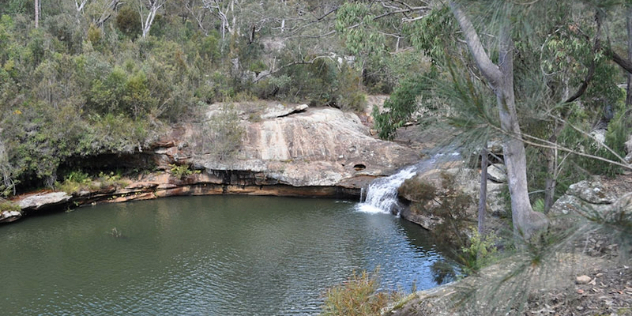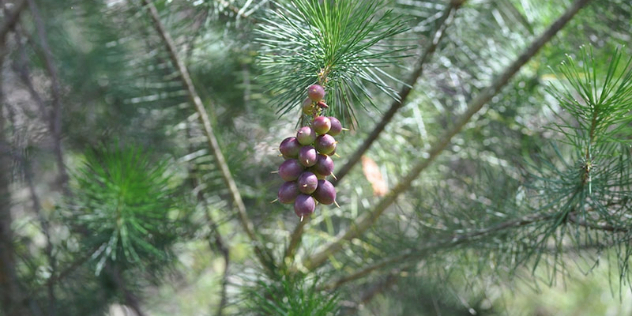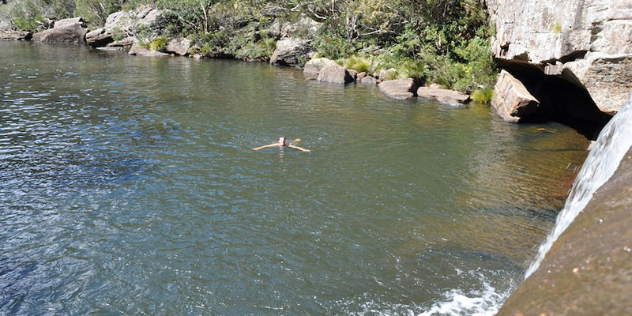Dharawal National Park

If you drive through Campbelltown in Sydney and continue south, suburbia evaporates and all at once you find yourself among farmland. A little further on, in a suburb called Wedderburn, you will come upon access to one of Sydney’s best kept secrets: Dharawal National Park.
Back in the 1980s, the area came within a hair’s breadth of being another housing development.
“This was going to be a subdivision, effectively, until the koala species were discovered in adjacent bushland, and then there was a push by the National Parks Association to protect this as a conservation area,” explains David Duffy, senior visitor services officer for the National Parks and Wildlife Service (NPWS).
The government acknowledged its environmental value and that spelled an end to more McMansions. In 2012, following community involvement, much of the area was upgraded to a national park, giving it an even greater level of protection.
The current access road into Dharawal National Park came courtesy of the developers – that’s how far along the process went – and thanks to some well-directed funding, the NPWS has made the whole area more accessible to the general public. There is a bitumen car park, new public toilets, and a picnic table with one section of its seats ‘missing’ to make it wheelchair friendly.
It’s a warm day when David and park ranger Dr Rowena Morris begin to give me a whirlwind tour of Dharawal. Joining us is Deidre Martin, who heads up the guided indigenous walks that offer visitors an Aboriginal perspective on the landscape.
At its northern entrance, Dharawal National Park appears to be mainly flat and dense bushland. But secreted behind this facade is a sprawling valley that drops down to O’Hare’s Creek.
O’Hare’s Lookout provides a bird’s eye view of this spectacular geography, and it’s hard to believe we are only a 10-minute drive from the urban fringe.
“This is so close to Sydney and yet you’re out in the middle of nowhere,” Rowena says.

O'Hare's Lookout
O’Hare’s Lookout is easily accessible but our next destination, the Jingga waterhole, isn’t. David and Rowena warn me that it’s hard going, although over the years I’ve noticed that when people say a track is ‘steep’, they seem to have the elderly and infirm in mind. This time, however, they are quite right about its incline and there are lots of loose rocks thrown into the bargain.
It’s worth the effort, though. The word Jingga means ‘nice and sweet’, referring to the taste of the water, and today the creek is still pristine. It passes through a V-notch weir, which was built in the early 20th century, and cascades down a short waterfall into a wide pool – all too inviting on a hot day.

Minerva Pool
One waterhole would be impressive enough, but Dharawal is blessed with two. Minerva Pool is also at the terminus of a bush track, although this one is much gentler than the one leading down to Jingga. Along the way, Deidre gives us some insights into the natural food and medicine to be found in the surrounding brush.
“This is our native currant,” she says, handing me a purple fruit about the size of a sultana. “These little things are full of vitamin C.”
I chew it up. It has a nice flavour, but it’s so tangy I fear my head is about to explode.
“They pack a punch don’t they?” she says. “What you can also do is take them home, crush them up and mix them up with vanilla ice cream – it has that sorbet sort of flavour.”

Native currants
There is also a lookout over Minerva. While the view is perhaps not quite as spectacular as the one from O’Hare’s Lookout, it has an interesting story behind it. Due to the lack of vehicle access, the platform had to be prefabricated and helicoptered in. Just to complicate things, the chopper brought the platform in back to front and it had to be turned around the right way before it was lowered into place.
The Minerva waterhole is perhaps even prettier than Jingga – it also has a waterfall but it feels more peaceful and untouched than its sibling up the creek.

Jingaa pool
The lookouts and waterholes are but a small sample of what Dharawal has to offer. The entire region covers some 7000 hectares; 6600 of those hectares are now officially national park, 375 are nature reserve and the remaining 75 are still a state conservation area. It is rich in endangered species (Rowena and David decline to name any for fear of attracting poachers), wildflowers and, of course, Aboriginal artefacts such as rock art and axe-grinding grooves. Mountain bikers will also find a number of tracks to test their abilities.
When we’re done for the day, civilisation is but a short drive away. I get in my car at the Dharawal car park, and just 20 minutes later I’m ordering a late lunch at the Arts Centre Café in Campbelltown. It’s the perfect way to It’s the perfect way to celebrate NAIDOC week and get away from it all without really getting away at all.
This piece was originally featured in the NRMA's Open Road magazine in November 2016. It was revised and updated in November 2020.


